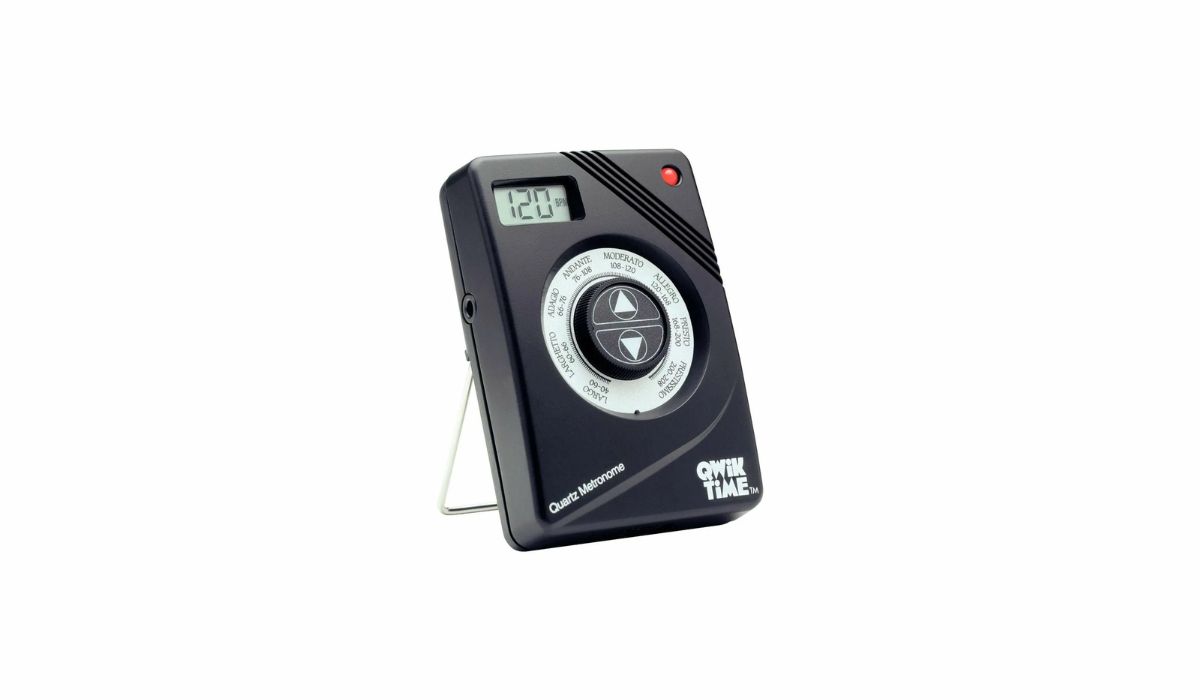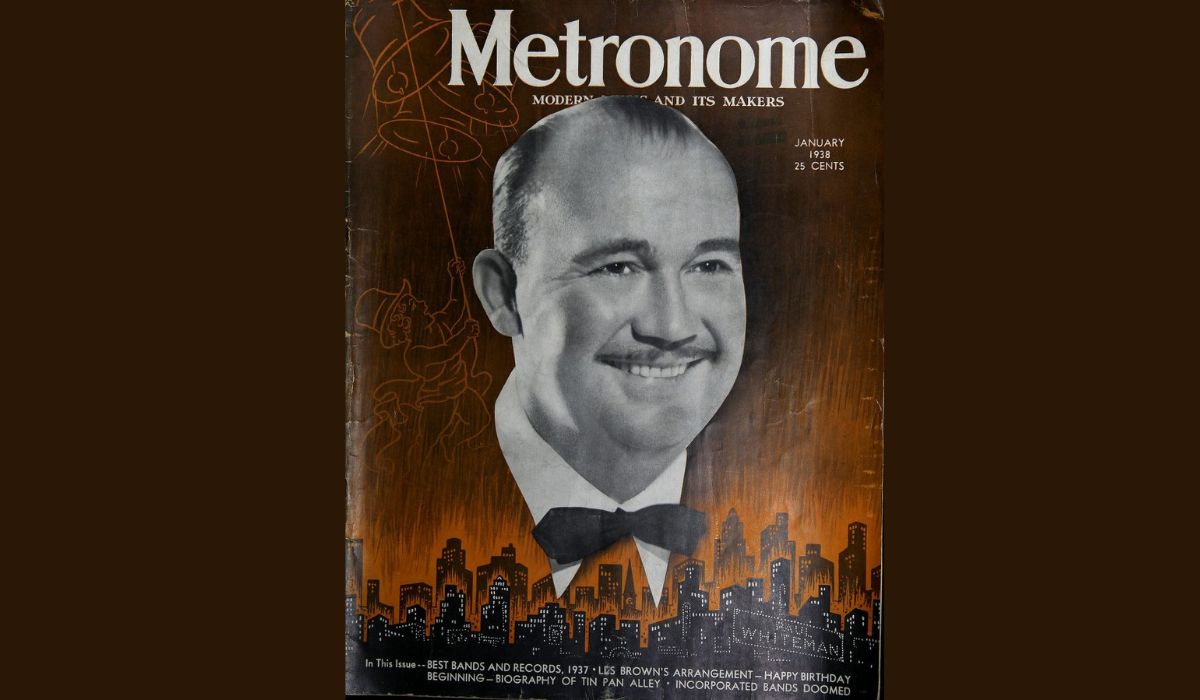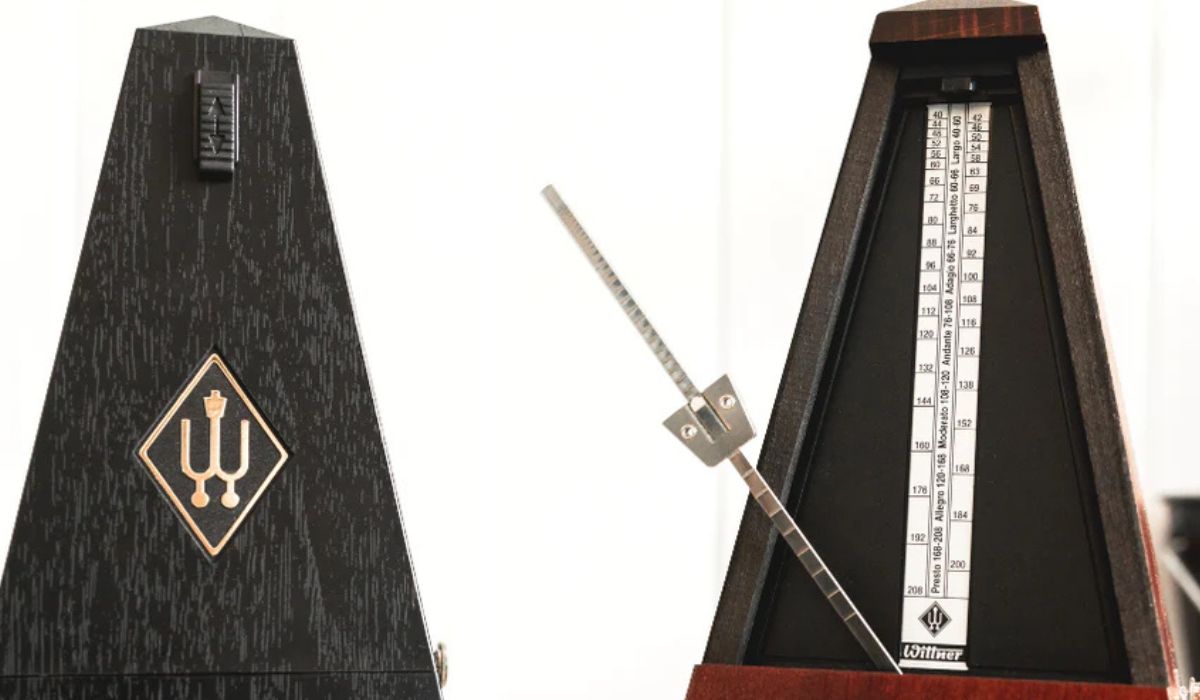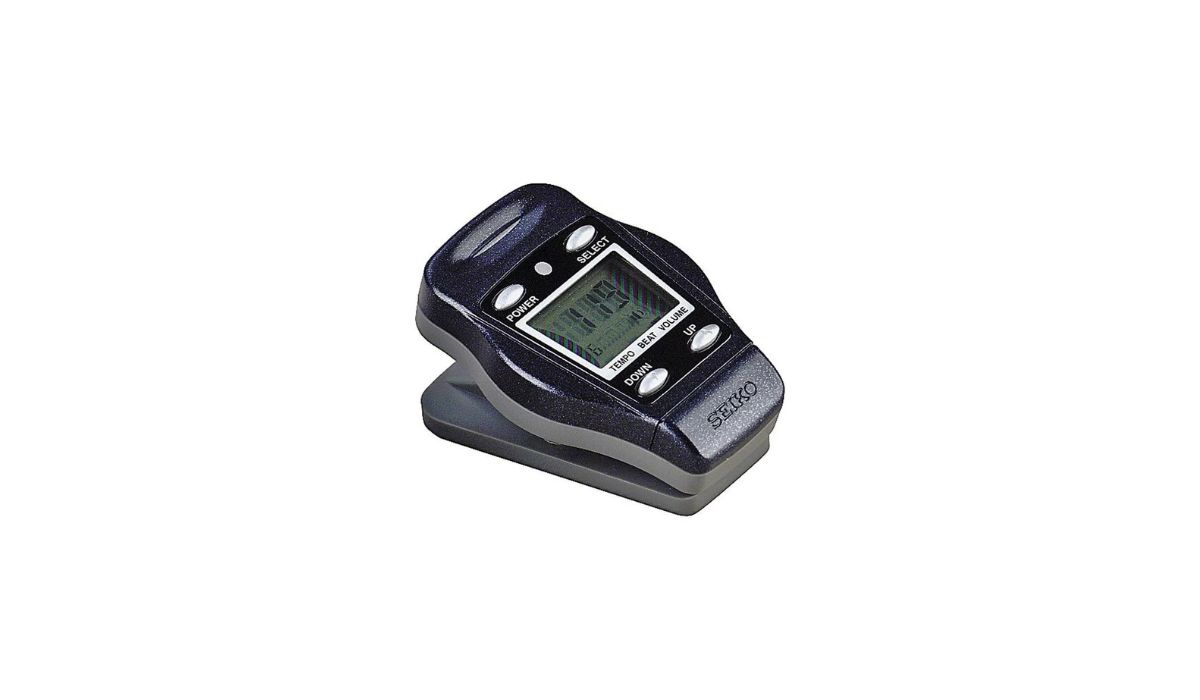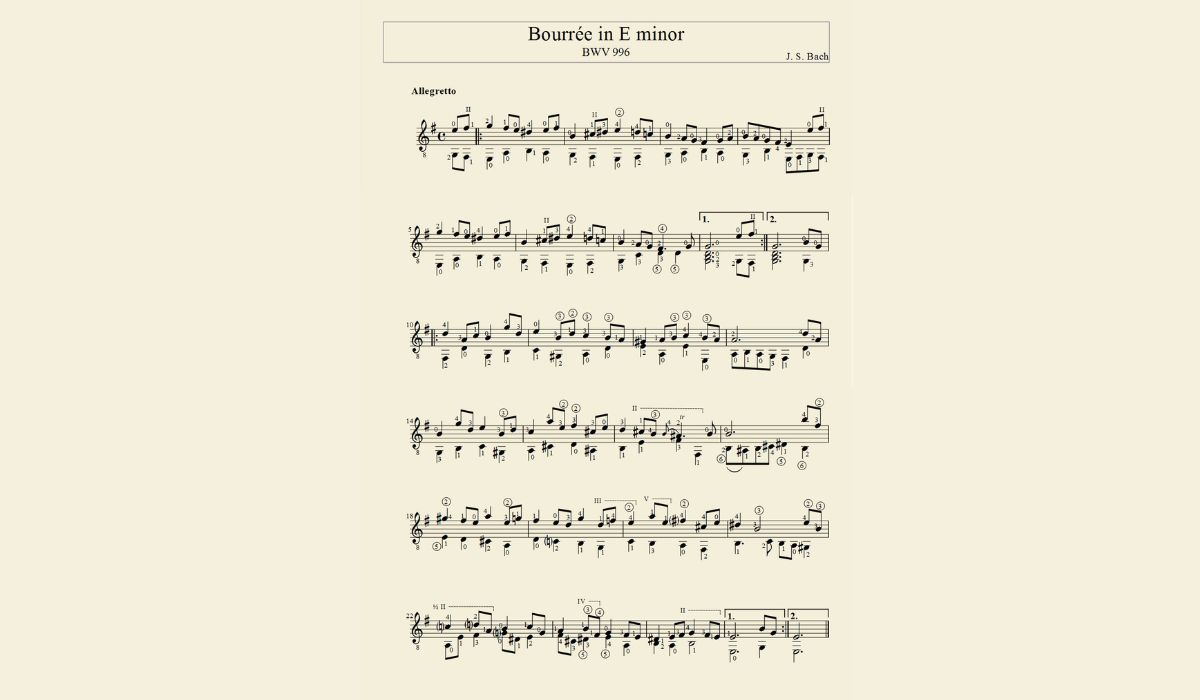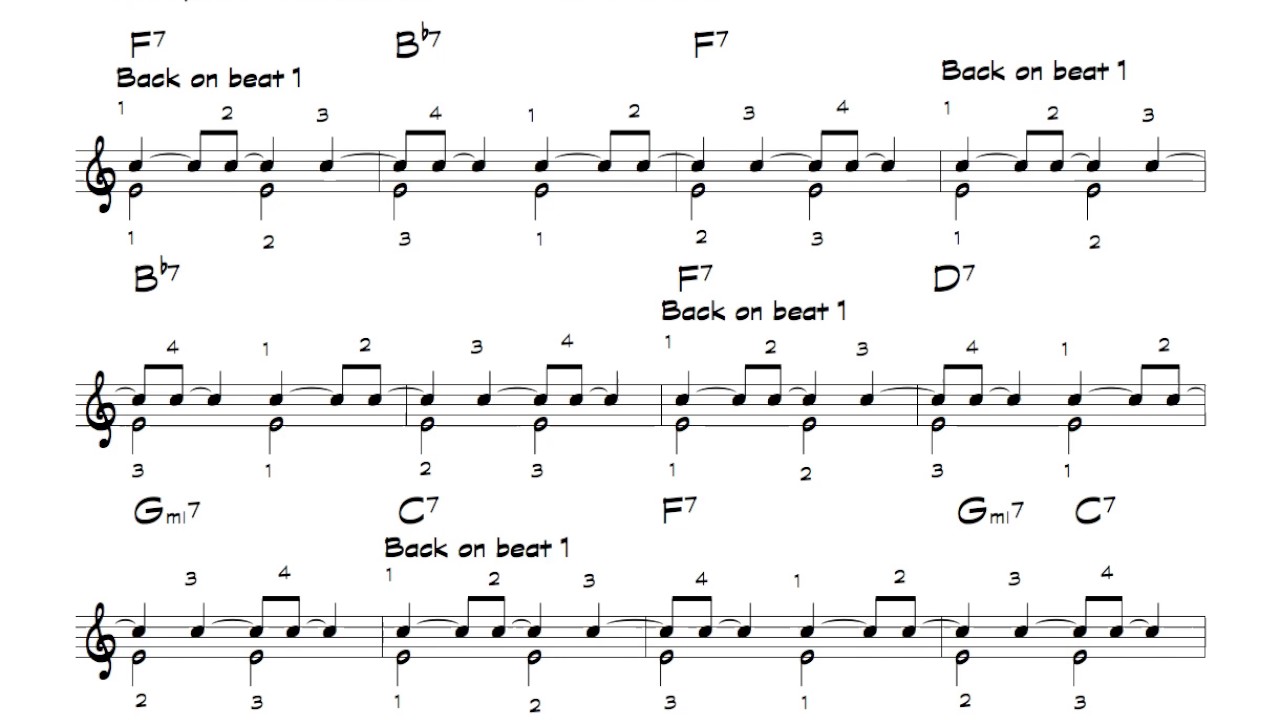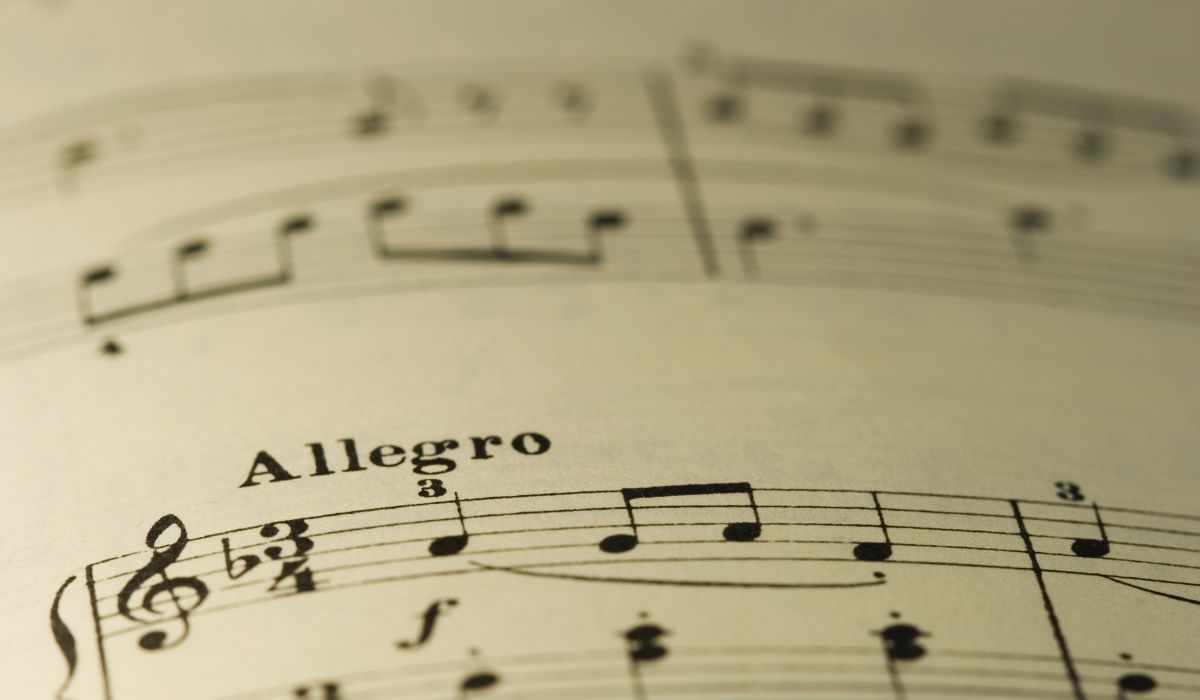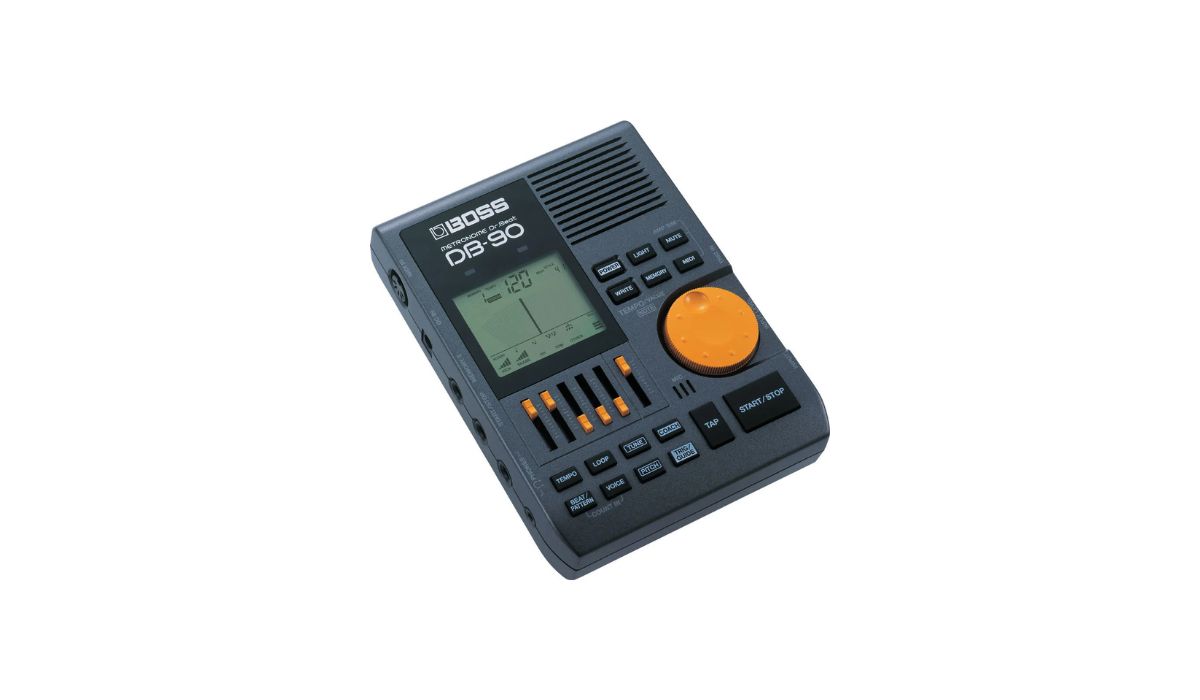Home>Production & Technology>Metronome>What Metronome Marking Is Vivo
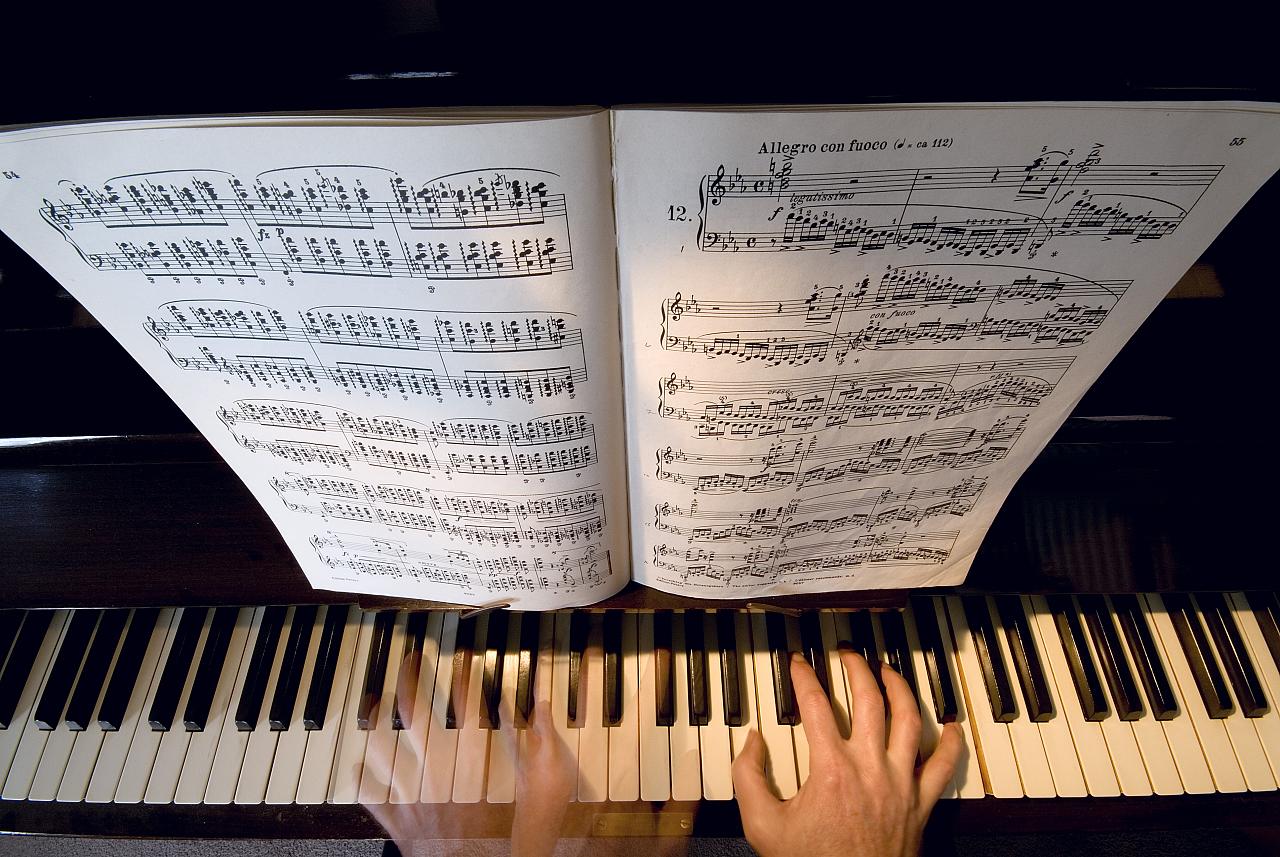

Metronome
What Metronome Marking Is Vivo
Modified: January 22, 2024
Learn about metronome marking "Vivo" and its significance in music. Explore the impact of tempo and rhythm with this important tool.
(Many of the links in this article redirect to a specific reviewed product. Your purchase of these products through affiliate links helps to generate commission for AudioLover.com, at no extra cost. Learn more)
Table of Contents
Introduction
Metronome markings play a crucial role in music, providing musicians with a clear indication of the tempo at which a piece should be played. These markings guide performers and ensure that the intended rhythm and pacing of the music are maintained consistently. One such metronome marking is “Vivo,” which signifies a lively and spirited tempo. In this article, we will delve deeper into what exactly metronome marking is and explore the specific characteristics of “Vivo.”
When it comes to music, rhythm and timing are of utmost importance. Musicians rely on a metronome to keep their performance in sync and to maintain a steady tempo throughout a piece. A metronome is a musical device that produces regular beats or clicks at a specified tempo. Composers indicate the desired tempo by including metronome markings in their scores, ensuring that performers can accurately interpret and execute their works.
The beauty of metronome markings lies in their ability to provide a universally understood language for musicians. Regardless of differences in interpretation or musical background, a specific metronome marking allows for consistent tempo across performances, creating a cohesive musical experience for both the performers and the listeners.
The marking “Vivo” is often used by composers to indicate a lively and animated tempo. Originating from the Italian language, “Vivo” translates to “live” or “lively.” This marking encourages performers to infuse energy and vibrancy into their interpretation, bringing a sense of vitality and excitement to the music.
Understanding the historical context of metronome markings is vital to comprehend their significance in music. The use of metronomes and markings traces back to the early 19th century, with the invention of the mechanical metronome by Johann Nepomuk Maelzel. This innovation revolutionized the way composers notated rhythm and tempo in their compositions, allowing for a more precise and consistent interpretation of their intentions.
Now that we have established a basic understanding of metronome markings, let us dive deeper into the specific characteristics and nuances of the metronome marking “Vivo” and explore its applications in various musical contexts.
Definition of Metronome Marking
In the world of music, metronome markings are essential notations that provide musicians with specific tempo indications. They serve as a guide for performers, dictating the speed and rhythm at which a musical piece should be played. Metronome markings consist of a numeric value that represents the beats per minute (BPM), along with a textual description that further clarifies the intended tempo.
Composers and arrangers include metronome markings in their musical scores to communicate their desired tempo to the performers. These markings are usually placed at the beginning of a piece or at significant rhythmic changes within the composition. The metronome marking ensures consistency in tempo across different performances of the same piece, allowing for a cohesive interpretation and preserving the composer’s artistic intent.
The numeric value of a metronome marking corresponds to the number of beats per minute. For example, a marking of “120 BPM” indicates that the piece should be played with 120 beats per minute. This numerical value serves as a precise reference point for performers and enables them to maintain a steady tempo throughout the musical performance.
In addition to the numeric value, metronome markings often include descriptive terms to provide further information and context. These terms can vary depending on the composer’s preferences or the style of the music. Some common descriptive terms found in metronome markings include:
- Andante – at a moderate walking pace
- Allegro – fast, lively
- Largo – very slow and broad
- Presto – very fast
- Vivace – lively and animated
These descriptive terms help to convey the character and mood of the music, giving performers a deeper insight into the intended performance style.
Metronome markings provide a significant level of precision and clarity when it comes to interpreting and executing musical pieces. They establish a common language among musicians, ensuring that performers from different backgrounds and interpretations can maintain a consistent tempo. By adhering to the metronome marking in a score, musicians can achieve the desired rhythmic accuracy and effectively express the composer’s intentions.
Explanation of “Vivo”
Derived from the Italian language, “Vivo” is a metronome marking that indicates a lively and spirited tempo in music. It is often used by composers to convey a sense of energy and vivacity in their compositions. The term “Vivo” directly translates to “live” or “lively” in English, and its inclusion in a musical score serves as an instruction to performers to play with a vibrant and animated approach.
When a composer uses the marking “Vivo,” it signals to the musicians that the piece should be performed with a buoyant and spirited interpretation. This metronome marking encourages the performers to inject a sense of life and excitement into the music through expressive playing, dynamic variations, and a faster tempo.
While the exact tempo indicated by “Vivo” may vary depending on the context and the composer’s intent, it typically suggests a tempo that is faster than “Allegro” but not excessively quick like “Presto.” The tempo of “Vivo” falls within the range of energetic and lively but still allows for clarity and precision in executing the musical phrases.
To fully understand the intended tempo of “Vivo,” musicians should consider the musical style and context of the composition. Different genres and musical periods may have varying interpretations of the marking. For example, in a Baroque or Classical piece, “Vivo” may connote a lively and elegant tempo, whereas in a Jazz or Latin composition, it may imply a more rhythmic and syncopated feel.
Interpreting the metronome marking “Vivo” requires a balance between maintaining the energetic character and executing the musical phrases with clarity and precision. It is essential for musicians to listen to recordings, study the style and context of the music, and work closely with the composer’s intentions to deliver an accurate rendition of the “Vivo” tempo.
Ultimately, the goal of “Vivo” is to bring the music to life and engage the listener with its dynamic and spirited nature. By adhering to the marked tempo and infusing it with personal musicality, performers can create an exciting and captivating musical experience for both themselves and the audience.
Historical Context of Metronome Markings
The use of metronomes and metronome markings has a rich history that dates back to the early 19th century. Prior to the invention of the mechanical metronome, musicians relied on other methods, such as conducting gestures or verbal instructions, to convey tempo. However, these methods lacked precision and consistency.
In 1815, Johann Nepomuk Maelzel, a German musician and inventor, developed the mechanical metronome. This device featured an adjustable weight that oscillated back and forth, producing regular clicks or beats at a set tempo. The metronome revolutionized the way composers notated rhythm and tempo in their compositions, providing a more accurate and reliable means of communicating tempo to performers.
Maelzel’s mechanical metronome became increasingly popular among composers and musicians, leading to the widespread adoption of metronome markings in musical scores. Composers began including specific numeric values representing beats per minute (BPM) to indicate the desired tempo. The addition of metronome markings provided a standardized method for performing and interpreting music, regardless of the performer’s musical background or interpretation.
With the advent of metronome markings, composers were able to convey their precise rhythmic intentions. This development had a profound impact on music composition and performance. It allowed for greater clarity and consistency in tempo, providing a solid foundation for musicians to build upon.
Over time, the usage and significance of metronome markings evolved and diversified. Composers began incorporating descriptive terms alongside the numerical BPM values to provide further context and interpretation guidance. These terms, such as “Andante,” “Allegro,” and “Vivo,” became an integral part of metronome markings, denoting not only the tempo but also the character or mood of the music.
The historical context of metronome markings highlights the importance of precision and consistency in music performance. It demonstrates how the invention of the metronome and the subsequent inclusion of metronome markings in musical scores reshaped musical interpretation and allowed for a more faithful representation of the composer’s intentions.
Today, metronome markings continue to serve as a vital tool for musicians, ensuring tempo accuracy and facilitating communication between composers and performers. They provide a common language that transcends cultural and stylistic boundaries, enabling musicians from different backgrounds to collaborate and create cohesive musical performances.
Importance of Metronome Markings
Metronome markings are of utmost importance in music as they serve as a crucial guide for performers, ensuring a consistent and accurate interpretation of tempo. They play a vital role in shaping the rhythm and pacing of a musical piece and contribute to the overall musical experience. Here are several reasons why metronome markings hold great significance:
1. Precision and Consistency: Metronome markings provide precise numerical values, indicating the exact beats per minute (BPM) at which a piece should be played. This ensures consistency in tempo across different performances and promotes a cohesive interpretation of the music. Musicians can rely on metronome markings to maintain a steady pace and execute rhythmic passages accurately.
2. Preservation of the Composer’s Intentions: Metronome markings are essential for preserving the composer’s original vision and intentions. They communicate the desired tempo and rhythmic feel, allowing performers to honor the composer’s artistic choices. By following metronome markings, musicians ensure that the music is presented in a manner that aligns with the composer’s creative expression.
3. Common Language for Performers: Metronome markings provide a common language among musicians, transcending different interpretations and musical backgrounds. Regardless of cultural or stylistic differences, metronome markings offer a universal method of communication, ensuring that musicians can collaborate and perform together seamlessly.
4. Facilitating Rehearsals and Ensemble Playing: In ensemble settings, metronome markings act as a fundamental tool for coordination. They help ensemble members synchronize their playing, ensuring that everyone maintains the same tempo and rhythm. Metronome markings also assist in rehearsals, allowing musicians to practice challenging passages with precision and gradually increase their tempo as they grow comfortable with the music.
5. Expressive Interpretation: While metronome markings provide a specific tempo indication, they also allow room for expressive interpretation within that framework. Musicians can infuse their personal musicality by incorporating dynamic nuances, phrasing, and subtle variations, while still adhering to the overall tempo structure. Metronome markings offer a balance between precision and artistic freedom, allowing performers to bring their unique expression to the music.
Overall, metronome markings are vital for maintaining tempo accuracy, preserving the composer’s intentions, and facilitating effective communication and collaboration among musicians. They provide a solid foundation for performers to build upon while still allowing for expressive interpretation. By adhering to metronome markings, musicians ensure a cohesive and engaging musical experience for both themselves and the audience.
Understanding the Metronome Marking “Vivo”
The metronome marking “Vivo” is a term that denotes a lively and energetic tempo in music. It is used by composers to convey a sense of vitality and animation in their compositions. To fully grasp the essence of “Vivo,” it is essential to understand its characteristics and how it should be interpreted and applied in musical performances.
As an indication of tempo, “Vivo” suggests a lively and spirited pace, encouraging performers to play with energy and enthusiasm. The exact tempo range associated with “Vivo” may vary depending on the specific piece and musical context. However, it generally implies a faster tempo than “Allegro” but not as brisk or hurried as “Presto.”
Interpreting “Vivo” requires a balance between maintaining a high level of energy and precision in executing the musical phrases. Musicians should strive to infuse the music with a vibrant character, employing dynamic variations, precise articulation, and a rhythmic drive. The goal is to convey a sense of liveliness and excitement to engage both the performers and the listeners.
Understanding the genre and style of the music is crucial when interpreting “Vivo.” For example, in a Baroque or Classical piece, “Vivo” may suggest a lively and elegant tempo, emphasizing clarity and refinement in execution. On the other hand, in genres such as Jazz or Latin music, “Vivo” might imply a more rhythmic and syncopated feel, with a focus on groove and improvisation.
When practicing music marked with “Vivo,” musicians should pay particular attention to maintaining precision, clarity, and a consistent sense of rhythm. They should also strive to capture and express the underlying emotional character of the piece, ensuring that the vibrant and lively nature of “Vivo” comes through in their performance.
Listening to recordings and studying performances of pieces marked “Vivo” by renowned musicians can provide valuable insights for interpretation. It allows musicians to grasp different approaches and ideas while developing their own unique interpretation of the marking.
Ultimately, understanding the metronome marking “Vivo” is about striking a balance between musicality and technicality. It involves infusing the music with a lively spirit while maintaining the precision and clarity necessary for a cohesive and engaging performance. By embracing the essence of “Vivo,” musicians can bring out the vibrancy and energy of the music, captivating both themselves and the audience.
Examples of “Vivo” in Musical Scores
The metronome marking “Vivo” is frequently found in various musical scores, spanning across different genres and time periods. It serves as an indication for performers to play with a lively and animated tempo, infusing the music with energy and vitality. Let’s explore a few examples of “Vivo” in musical compositions:
1. Beethoven’s Symphony No. 5: In the first movement of Beethoven’s iconic Symphony No. 5 in C minor, the metronome marking “Vivo” appears. This marking sets the pace for the thrilling and energetic nature of the entire symphony. The music demands a precise execution of rhythms and a dynamic interpretation to capture the powerful and lively essence of “Vivo.”
2. Gershwin’s “Rhapsody in Blue”: Gershwin’s iconic piece, “Rhapsody in Blue,” features sections marked as “Vivo.” These segments showcase the rhythmic intricacy and the lively improvisatory nature of the composition. The metronome marking “Vivo” guides the performers in delivering the lively syncopations and virtuosic passages that give the piece its distinctive energy.
3. Mozart’s Symphony No. 40: In the first movement of Mozart’s Symphony No. 40 in G minor, the metronome marking “Vivo” is often found. This symphony is known for its dramatic and expressive qualities. The “Vivo” marking encourages performers to navigate the brisk and lively tempo while maintaining a sense of urgency and intensity throughout the movement.
4. Piazzolla’s “Libertango”: In Astor Piazzolla’s famous composition, “Libertango,” the metronome marking “Vivo” appears, reflecting the energetic and passionate nature of the tango genre. This marking prompts performers to play with a lively and rhythmically-driven approach, capturing the vibrant essence of the tango dance form.
5. Handel’s “Music for the Royal Fireworks”: Handel’s grand orchestral suite, “Music for the Royal Fireworks,” includes sections marked as “Vivo.” These sections are characterized by lively fanfares and rapid passages representing jubilation and celebration. The metronome marking “Vivo” guides musicians in maintaining a spirited and joyful tempo throughout the performance.
These examples illustrate how metronome markings, specifically “Vivo,” can be found in a wide range of musical compositions. They act as a guide for performers to capture the energetic and lively nature of the music. By following the metronome marking “Vivo,” musicians can deliver performances that are infused with energy and bring out the dynamic and spirited qualities that the composers intended.
Practical Applications of “Vivo”
The metronome marking “Vivo” has practical applications in various musical contexts, providing valuable guidelines for performers. Understanding and applying “Vivo” effectively can greatly enhance musical interpretations and performances. Let’s explore several practical applications of “Vivo” in different musical scenarios:
1. Solo Performances: In solo performances, “Vivo” can serve as a reminder to the performer to approach the music with enthusiasm and liveliness. It encourages expressive playing and brings out the energy in the music. Whether it is a piano sonata, a violin solo, or a vocal performance, adhering to the “Vivo” marking can elevate the performance and captivate the audience.
2. Chamber Ensembles: In chamber ensemble settings, “Vivo” helps to establish a synchronized and spirited performance. It ensures that the ensemble members maintain a lively tempo and energized playing style. Coordinating their interpretation around the “Vivo” marking helps the musicians create a cohesive and engaging ensemble sound.
3. Orchestral Performances: In orchestral performances, “Vivo” guides the conductor and the musicians to maintain a lively tempo throughout the piece. It helps in capturing the energy and excitement required in sections of the music that call for a spirited and animated performance. The marking plays a crucial role in maintaining a cohesive ensemble and creating a vibrant orchestral sound.
4. Contemporary Music: In contemporary music, composers often use “Vivo” to indicate a dynamic and energetic approach. This is especially relevant for genres like jazz, fusion, and pop, where rhythmic drive and improvisation are key elements. Adhering to the “Vivo” marking helps performers stress the rhythmic intricacies and create an engaging and compelling performance.
5. Dance Performances: In dance performances, particularly in genres like ballet or Latin dance, “Vivo” sets the pace and energy level for the accompanying music. It ensures that the music aligns with the dancers’ movements, enhancing the overall synchronization and impact of the performance. The lively tempo indicated by “Vivo” complements the visual elements of the dance, creating a dynamic and captivating experience for the audience.
By applying the metronome marking “Vivo” in these various musical scenarios, performers can bring a certain vibrancy and vitality to their music. It serves as a practical tool to channel the intended energy and create a dynamic performance. Incorporating the spirit of “Vivo” enables musicians to connect with the audience, evoke emotional responses, and deliver engaging and memorable musical experiences.
Conclusion
Metronome markings, including the lively and spirited tempo indication “Vivo,” play a significant role in the world of music. They provide musicians with a precise guide for tempo and pacing, ensuring consistency, and preserving the composer’s intentions. The practical applications of metronome markings allow performers to deliver nuanced and engaging performances.
Understanding metronome markings, such as “Vivo,” enhances musicians’ ability to bring out the desired energy and vitality in their interpretations. It encourages expressive playing and facilitates collaboration among performers. By adhering to the suggested tempo and infusing personal musicality, musicians can captivate audiences and convey the emotional essence of a composition.
The historical context of metronome markings demonstrates how they have evolved over time, becoming a standardized and universal language in music. From classical symphonies to contemporary genres, metronome markings provide precision and clarity, bridging gaps between various interpretations and styles.
The practical applications of metronome markings range from solo performances to orchestral settings, allowing musicians to synchronize and create cohesive performances. “Vivo” finds its place in diverse musical contexts, including solo works, chamber ensembles, orchestras, and dance performances.
In conclusion, metronome markings, particularly “Vivo,” are indispensable tools for musicians. They provide crucial information about tempo, energize performances, facilitate coordination, and help express the intended emotion and character of a composition. By embracing and understanding metronome markings, musicians can create vibrant, engaging, and memorable musical experiences for both themselves and their audiences.

